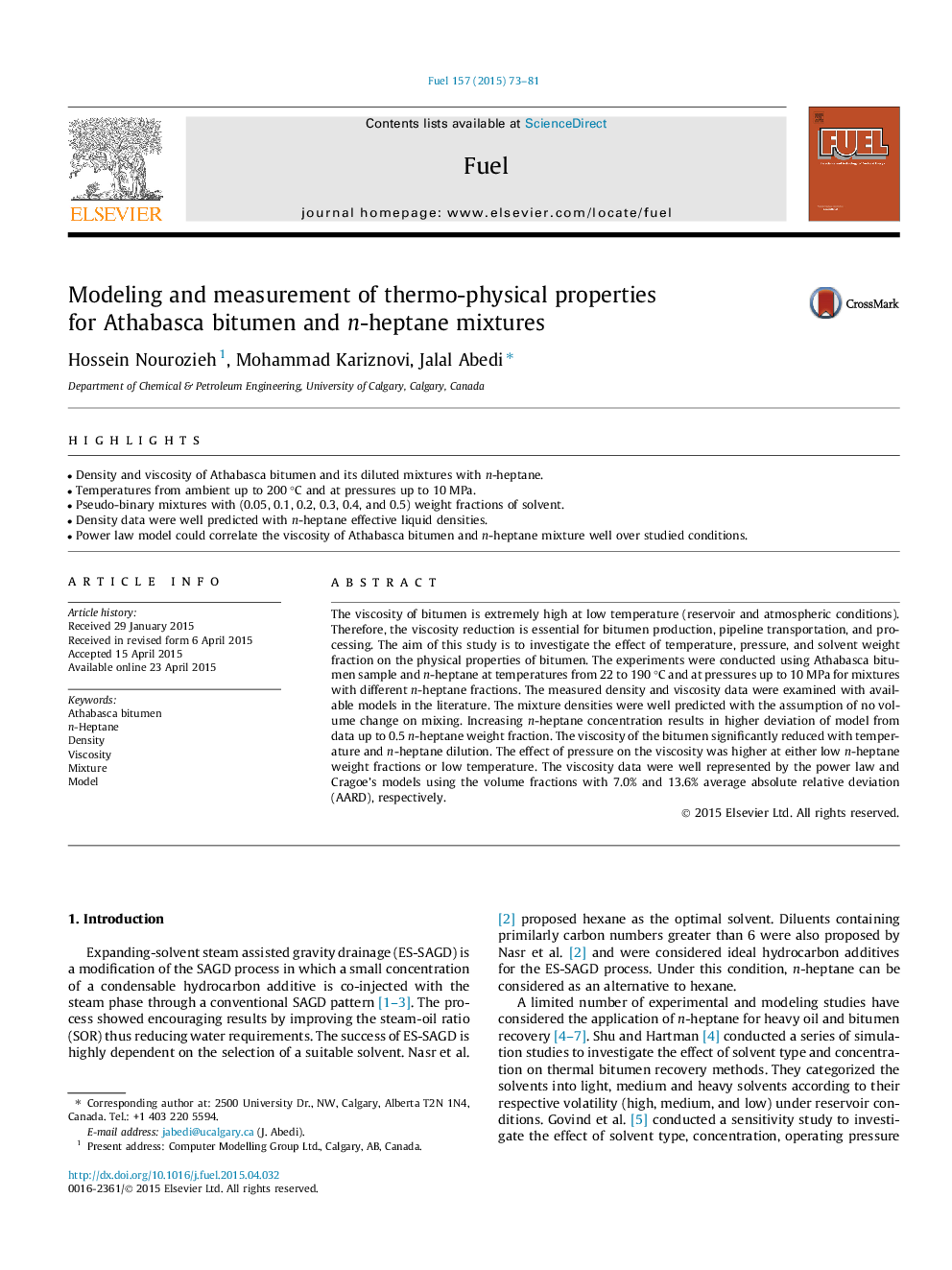| Article ID | Journal | Published Year | Pages | File Type |
|---|---|---|---|---|
| 6635242 | Fuel | 2015 | 9 Pages |
Abstract
The viscosity of bitumen is extremely high at low temperature (reservoir and atmospheric conditions). Therefore, the viscosity reduction is essential for bitumen production, pipeline transportation, and processing. The aim of this study is to investigate the effect of temperature, pressure, and solvent weight fraction on the physical properties of bitumen. The experiments were conducted using Athabasca bitumen sample and n-heptane at temperatures from 22 to 190 °C and at pressures up to 10 MPa for mixtures with different n-heptane fractions. The measured density and viscosity data were examined with available models in the literature. The mixture densities were well predicted with the assumption of no volume change on mixing. Increasing n-heptane concentration results in higher deviation of model from data up to 0.5 n-heptane weight fraction. The viscosity of the bitumen significantly reduced with temperature and n-heptane dilution. The effect of pressure on the viscosity was higher at either low n-heptane weight fractions or low temperature. The viscosity data were well represented by the power law and Cragoe's models using the volume fractions with 7.0% and 13.6% average absolute relative deviation (AARD), respectively.
Related Topics
Physical Sciences and Engineering
Chemical Engineering
Chemical Engineering (General)
Authors
Hossein Nourozieh, Mohammad Kariznovi, Jalal Abedi,
